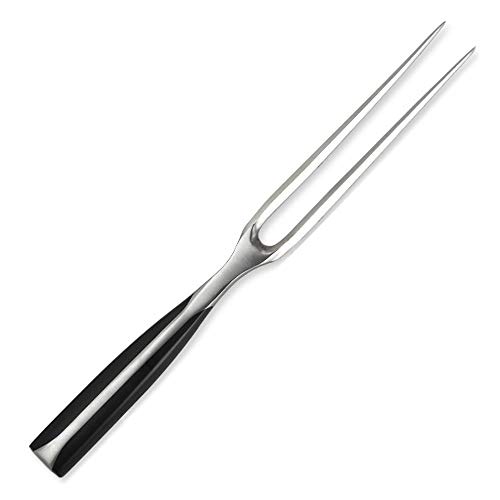Yes, a carving fork can be used for other meats besides beef
When many people think of a carving fork, they automatically associate it with beef. However, a carving fork can actually be used for a variety of different meats besides beef. In fact, a carving fork can be an incredibly versatile tool in the kitchen.
Using a carving fork for poultry
One of the most common uses for a carving fork besides beef is for poultry. A carving fork can be used to securely hold the chicken, turkey, or other poultry in place while you carve it. This makes it much easier to get nice even slices without the meat slipping around on the cutting board.
Another great thing about using a carving fork for poultry is that it helps prevent burns. Rather than trying to use your hands to hold the hot bird in place, you can use the fork to safely hold it in place and keep your hands away from the heat.
Using a carving fork for pork
Another meat that a carving fork works well with is pork. Pork can be a tricky meat to carve due to its density, but a carving fork can help make the task much simpler. By holding the pork in place with a fork, you can easily slice it into nice thin pieces without worry that it will slip around on the cutting board.
Another benefit of using a carving fork for pork is that it can help remove any bones that are left in the meat. By holding the meat in place with the fork, you can more easily and safely remove any remaining bones without risking injury.
Using a carving fork for lamb
Finally, a carving fork can also be used for lamb, particularly for leg of lamb. A leg of lamb can be a bit unwieldy to handle, but a carving fork can help you securely hold it in place while you carve it. This will result in cleaner, more even slices that will make your dinner guests very happy.
Caring for your carving fork
Now that you know all the different types of meat that you can use your carving fork for, it’s important to know how to care for it properly. Make sure you hand wash your carving fork in warm soapy water after each use and dry it completely before storing it away. Avoid using any abrasive cleaners or leaving it soaking in water for an extended period of time.
By taking good care of your carving fork, you’ll be able to enjoy all of its benefits for years to come.






